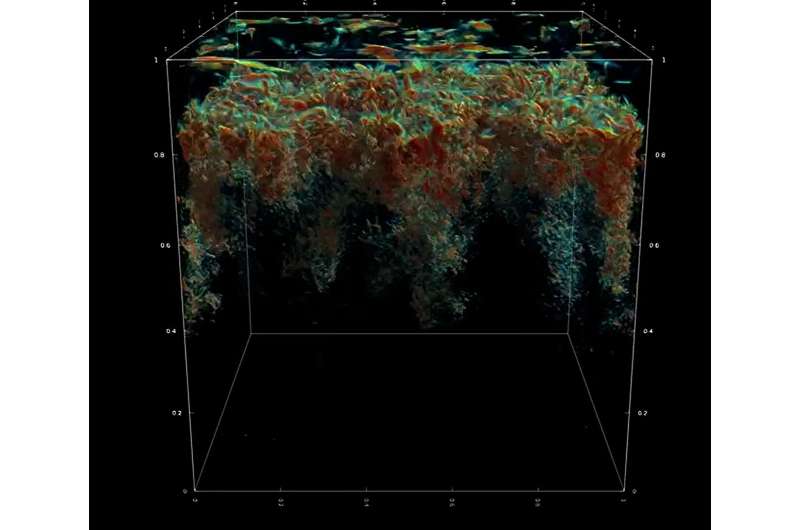
NASA supercomputers are shedding light on what causes some of the sun’s most complex behaviors. Using data from the suite of active sun-watching spacecraft currently observing the star at the heart of our solar system, researchers can explore solar dynamics like never before.
The animation shows the strength of the turbulent motions of the sun’s inner layers as materials twist into its atmosphere, resembling a roiling pot of boiling water or a flurry of schooling fish sending material bubbling up to the surface or diving it further down below.
“Our simulations use what we call a realistic approach, which means we include as much as we know to-date about solar plasma to reproduce different phenomena observed with NASA space missions,” said Irina Kitiashvili, a scientist at NASA’s Ames Research Center in California’s Silicon Valley who helped lead the study.
Using modern computational capabilities, the team was able for the first time to reproduce the fine structures of the subsurface layer observed with NASA’s Solar Dynamics Observatory.
“Right now, we don’t have the computational capabilities to create realistic global models of the entire sun due to the complexity,” said Kitiashvili. “Therefore, we create models of smaller areas or layers, which can show us structures of the solar surface and atmosphere—like shock waves or tornado-like features measuring only a few miles in size; that’s much finer detail than any one spacecraft can resolve.”
Scientists seek to better understand the sun and what phenomena drive the patterns of its activity. The connection and interactions between the sun and Earth drive the seasons, ocean currents, weather, climate, radiation belts, auroras and many other phenomena. Space weather predictions are critical for exploration of space, supporting the spacecraft and astronauts of NASA’s Artemis campaign. Surveying this space environment is a vital part of understanding and mitigating astronaut exposure to space radiation and keeping our spacecraft and instruments safe.
This has been a big year for our special star, studded with events like the annular eclipse, a total eclipse, and the sun reaching its solar maximum period. In December 2024, NASA’s Parker Solar Probe mission—which is helping researchers to understand space weather right at the source—will make its closest-ever approach to the sun and beat its own record of being the closest human-made object to reach the sun.
“The sun keeps surprising us,” said Kitiashvili. “We are looking forward to seeing what kind of exciting events will be organized by the sun.”
These simulations were run on the Pleaides supercomputer at the NASA Advanced Supercomputing facility at NASA Ames over several weeks of runtime, generating terabytes of data.
Provided by
NASA
Video: Our sun is the star in a new simulation (2024, November 21)
retrieved 21 November 2024
from https://phys.org/news/2024-11-video-sun-star-simulation.html
part may be reproduced without the written permission. The content is provided for information purposes only.